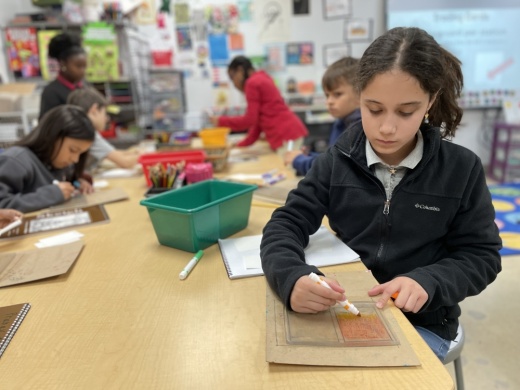School districts receive funding based on attendance, making student enrollment an important factor as districts face financial hurdles from the state and immediate communities. Simultaneously, enrollment data indicates many families feel the districts are not meeting their needs, and are seeking more satisfying options.
The overview
Community Impact analyzed TEA, U.S. Census Bureau and withdrawal data from local school districts to find out where students are going. Overwhelmingly, data indicates families are choosing charter schools.
In the last decade, four charter schools opened in North Austin suburbs: Harmony and Idea public schools, BASIS Texas Charter Schools and Valor North Austin. Another Harmony campus is under construction near Georgetown. These join the previously established Meridian World School and Gateway College Preparatory School.
Transfer data from the Texas Education Agency shows 12.3% of students enrolled in Round Rock ISD in the 2022-23 school year left the district for charter or public schools in a different school district.
New educational options are not limited to charter schools. New private schools, such as Crosslife Christian Academy in Pflugerville, and homeschooling groups have formed in recent years.
Census Bureau data shows about 59,000 school-aged children live within Round Rock ISD, meaning the district is capturing about 79% of possible students. No Texas agency tracks private or homeschool students, but this data shows about 6,000 of those children are choosing one of these two options.
Dana Martin, whose children previously attended Georgetown ISD, chose to enroll her children at Goodwater Montessori, where they are thriving—especially her older son.
“How can you be testing so low, so bored and not being challenged?” Martin said. “He wasn’t getting his needs met at all.”By the numbers
Despite growth in the area population, enrollment for RRISD has remained largely unchanged.
In RRISD, enrollment has hovered between 45,000 and 50,000, lowering in recent years as the number of students transferring out of the district entirely grew from 2,538 in the 2012-13 school year to 5,723 in the 2022-23 school year. In that time, the district saw a spike in students leaving to be homeschooled before dropping the last two years.
Similarly, Pflugerville ISD saw the number of students leaving the district grow from 1,762 in the 2012-13 school year to 5,398 in the 2022-23 school year, while enrollment has only grown by around 2,000 students during the past 10 years.
Georgetown ISD and Hutto ISD also saw out-of-district transfers double within that time period, but in recent years have grown in enrollment and were designated fast-growth districts by the state.What it means
Families are enrolling their children in charter and private schools for a variety of reasons.
Sarah Gardner, director of community engagement for Meridian World School, said the charter school offers a smaller environment for students to enjoy many of the same opportunities they would have at a traditional public school.
Michelle Paul, Crosslife Christian Academy’s admissions director, and Daniel Cattau, Concordia High School’s head of school, both pointed to smaller class sizes and relationships between teachers and students as a primary benefit of private schooling.
Bob Templeton—a demographer with Templeton Demographics, also known as Zonda Education—said that in compiling projections, he has observed a sharp increase in homeschooling, largely due to the convenience of educating from any location.
Some parents have multiple children in their family, with each attending a different school to ensure their individual needs are met. Michelle Evans, another parent in RRISD, said she has three children, with one child attending a RRISD school, a second attending the Texas School for the Deaf, and a third homeschooling.
Evans said she later plans to have her homeschooled child re-enter RRISD to be involved with athletic opportunities available in the district.
Driving decisions
Parents who spoke with Community Impact cited several reasons why they chose to transfer their students to alternative schools, including:
- Smaller class sizes
- Special programming
- Religious affiliation
“What we've tried to do all along is meet the needs of each kid individually, and make sure that our family values are represented, or at least aren't adversarial to the programs that they're in,” said Michelle Evans, RRISD parent.
Going forward
On a year-to-year basis, enrollment can impact many decisions made by school leaders, Azaiez said. Recent stagnation of enrollment and increased costs of operations have led the district to cut entire positions from its budget. However, the district has not laid off any employees to date as a result of enrollment changes. Instead, the district has reallocated funds from unfilled positions to pay for existing jobs.
In recent years, RRISD has hired recruiters to bring back students who have left for local charter schools, a move Azaiez said the district does not currently have plans to make again.
“I think what we fail to do as a school district is we’re not aggressive like charter schools are when it comes to trying to go out there and recruit parents and bring them to their campuses,” Azaiez said.
While having more students attend the RRISD campuses they are zoned for could bring additional money to the district, he said it would not be a solution to cost pressures such as recapture, a mechanism requiring some Texas schools to pay a portion of their property tax revenue back to the state. The best case scenario, in which all of the children zoned for RRISD were to attend 100% of the time, he said the district would only be able to retain about $30 million. This would still have the district paying over $80 million in recapture, based on current school year projections.





